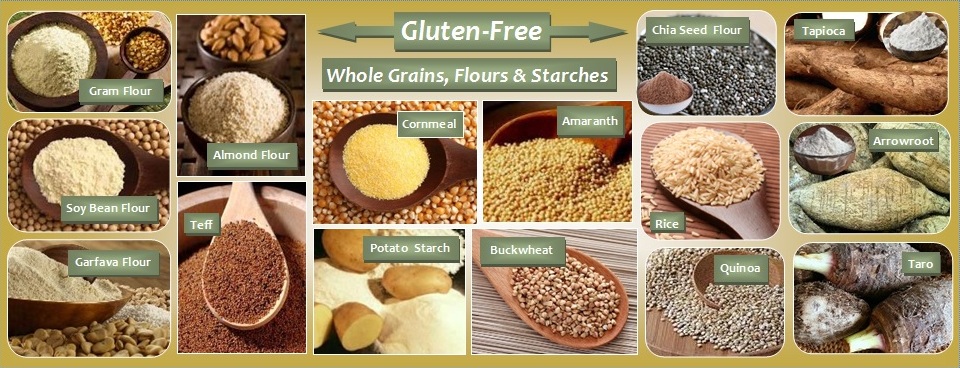
By Jennifer K. Nelson, R.D., L.D. April 17, 2015 In a previous blog, we gave examples of whole grains that can take the place of gluten-containing grains — wheat, rye, barley and oats that aren't certified gluten-free — for people who have celiac disease and others who should avoid gluten. Why is this important? According to the Dietary Guidelines for Americans, most Americans don't get enough fiber. Whole grains are one of the major sources of fiber. And a diet that has ample fiber is associated with better health and lower risk for obesity, heart disease, type 2 diabetes and diet-related cancers. So here are 5 more gluten-free whole grains that can add fiber and variety to your diet: Cornmeal: Coarsely ground, cornmeal retains the husk (fiber) and the germ (where many nutrients are found). Polenta is essentially the same — coarsely ground corn. Depending on how thick or thin you like to cook cornmeal or polenta, you can use 1 part of the grain to 1 part liquid (thick) to 5 parts liquid (thinner). You can use water or milk. For breakfast, try topping it with fruit and nuts, and drizzle with honey or maple syrup. For a dinner side dish, try the thicker version and add herbs, such as thyme or oregano, while cooking, and top with grated parmesan. More common recipes for ground corn include cornmeal muffins, cornbread and cornmeal pancakes. Corn tortillas are also whole grain. Approximately one-half cup dry cornmeal contains about 4 grams of fiber. Rice: Most rice that includes the term "brown" is considered whole grain. Whole-grain options include Wehani rice, Himalayan red rice, purple Thai rice and Chinese black rice. Although not technically rice, wild rice (a seed) is also whole grain. Rice is versatile. Cook as a side dish and flavor it with dried fruit or bits of chopped vegetables. Add to soups and casseroles, or try rice-based salads. And don't forget rice pudding. One-half cup dry rice contains about 3 grams of fiber. Oats: Although oats are naturally gluten-free, they can easily become contaminated with wheat because of how they're grown and harvested. Therefore, look for oats that are certified gluten-free. Oats can be made into breakfast cereal, used as the grain in pilaf, baked into cookies, muffins and scones, and added to ground meats (think turkey burger) and even smoothies. One-half cup dry oats (regular or quick cook) contains about 4 grams of fiber. Flax: Not technically a grain, flax is actually a seed. Because the seed form is difficult to digest, the ground form (flaxseed meal) is popular. A little goes a long way. Add 1 to 2 tablespoons ground flaxseed to your breakfast cereal or yogurt. Add to a serving of soup or mashed potatoes. Use as an egg substitute in baked goods (1 tablespoon meal plus 3 tablespoons water can take the place of 1 egg). Seeds can be milled to a light granular powder in a clean coffee grinder. Two tablespoons of flaxseed meal have about 4 grams of fiber. Sorghum: A drought-resistant, ancient African grain, sorghum is the fifth most important cereal crop in the world. Because of its neutral flavor, flour made from sorghum can stand in for wheat flour in baked goods, such as breads and muffins. The grain is about the size of barley or wheat berries (wheat kernel except hull). It can be used in pilaf, salads and soups. It can be also popped like popcorn. One-quarter cup of the grain has about 3 grams fiber; one-half cup of the whole-grain flour has 4 grams. Whether or not you are going gluten-free, these whole grains are good for you. Have you tried any of these? Share how you've prepared these grains.
|
Nenhum comentário:
Postar um comentário
Observação: somente um membro deste blog pode postar um comentário.